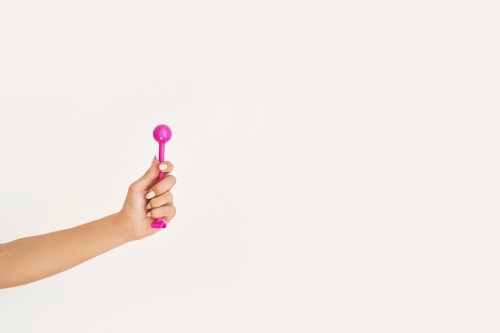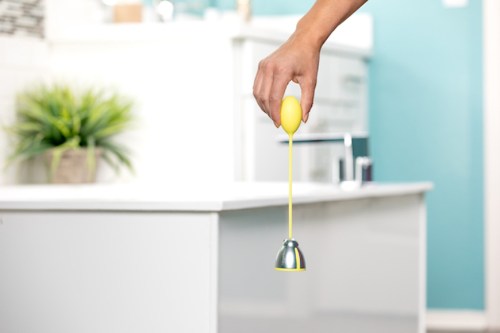Our editors independently select these products. Making a purchase through our links may earn Well+Good a commission
5 Pelvic-Floor Tools for At-Home Strengthening That Are More Powerful Than a Kegel
Incontinence, painful sex, and chronic constipation are signs of pelvic-floor dysfunction. These pelvic-floor tools for at-home use can help.

Ever since social distancing orders rolled out in March 2020, we’ve seen an influx of at-home fitness offerings, as well as a major increase in sex-toy sales. (They’re up as much as 600 percent year over year). Put the exercise and sexual wellness categories together and what have you got? Pelvic-floor dysfunction care—an industry that’s also grown rapidly during the pandemic.
Experts in This Article
physical therapist in New York City
Janelle Howell is a Doctor of Physical Therapy who specializes in pelvic health
Sport and pelvic physiotherapist and founder of The Kegel Release Curve
Everyone has a pelvic floor, and yet the muscle group remains largely shrouded in “shhh” energy. So no shade if you don’t currently know much about this group of muscles, which runs like a sling from the pubic bone (in the front) to the tailbone (in the back). The pelvic floor holds the bladder, bowels, and uterus in place, and it plays a role in defecation, urination, and sexual functioning. As sport and pelvic physiotherapist Kate Roddy, CEO and founder of the Kegel Release Curve, puts it: “These muscles are what stop you from peeing your pants.”
Usually, the pelvic floor does its duty of holding in your urine—among other things—without any effort on your part. But certain life events can cause these muscles to either weaken or tighten—childbirth, stress, lack of physical activity, diet choices, menopause, and even poor posture. This leads to pelvic-floor dysfunction, says Janelle Howell DPT, WSC, a board-certified doctor of physical therapy who specializes in pelvic health. According to her, about one-third of people with vaginas experience pelvic-floor dysfunction at some point in their lifetime, which can cause symptoms such as bladder leakage, painful sex, and chronic constipation.
Why pelvic-floor care is having a moment
Is pelvic-floor dysfunction a new phenomenon? Absolutely not. But we’re hearing more about it now due, at least in part, to the COVID-19 pandemic. “During the pandemic, access to hands-on experts and in-person pelvic-floor care became more limited,” says Dr. Howell. This created an increased demand for at-home care options. Furthermore, she adds, spending more time at home may have given people “the chance to tune in to their bodies a bit more deeply.” Symptoms that that were once overlooked may have become more noticeable.
Pelvic Gym physical therapist Corey Silbert Hazama, DPT, adds that stress is a leading cause of pelvic-floor dysfunction. And given that we’re living in oh-so-stressful times—and stress was a public health issue even before the pandemic—pelvic-floor dysfunction has likely been on the rise for a while now. Thus, there may be more need for pelvic-floor care now than there was previously.
Whatever the reason, though, there are a solid handful of pelvic-floor wellness tools available, the very existence of which underscores its industry growth. Some of the tools help to release tight pelvic-floor muscles. Others help strengthen weak ones. None of them, though, should replace an actual pelvic-floor therapist—but if you’re planning to work with an expert, you can use it to help you narrow down your options together.
Keep reading for 5 new pelvic-floor care tools that can help with incontinence, painful sex, childbirth, and more symptoms of pelvic floor dysfunction.
Kegelbell

Kegelbell — $100.00
PSA: If you pee a little when you laugh or skip rope, it’s a sign of weak or under-active vaginal muscles. Kegelbell is an FDA-registered kegel system designed to help treat (and even prevent) this kind of muscle weakness.
Also known as “The Vagina Gym,” the device looks like a tiny kettlebell with a silicone egg attached to one end. The egg sits inside the vagina where a tampon usually goes, while the weight hangs outside. “The device is the first externally weighted kegel system,” says Dr. Howell. “[It] allows users to add to their workout over time, while remaining comfortable by placing the weight outside of the body.”
Dr. Howell says anyone with a vagina can benefit from using Kegelbell three times a week for five minutes, “but it’s especially helpful for women who are preparing for pregnancy, post-birth, and during perimenopause and menopause, as well as those looking to connect with their body and amplify their sex life,” she adds.

Elvie Trainer — $199.00
Kegels sound easy enough: Just pretend you’re holding in your pee, right? Well in actuality, many people do kegels incorrectly. Due to lack of pelvic-floor awareness, they may only be able to activate some of their pelvic floor muscles, as opposed to the entire structure. Another common mistake? Bearing down while engaging in a kegel, which can make symptoms worse.
That’s where Elvie Trainer—a tampon-shaped, silicone device designed to be inserted inside the vagina—comes in. It syncs with a smartphone app that delivers real-time biofeedback on kegel performance, giving you the opportunity to course-correct. This protects you from the long-term risks of incorrect kegel exercises—and helps to improve bladder control, enhance postnatal recovery, and increase sensation during sex.

KegelSmart — $100.00
KegelSmart is a pelvic floor “coach” that uses touch-sensor technology to register your pelvic-floor strength. The tool establishes a kegel exercise routine just for you, vibrating to tell you when to contract and when to release.
Because the tool is designed to strengthen the vaginal muscles, it’s best for those prepping for pregnancy or looking to improve bladder control. According to the device’s makers, daily five-minute training sessions deliver “measurable results” in about 12 weeks.

Kegel Release Curve — $139.00
At first glance, there are obvious similarities between the Kegel Release Curve and sex toys like the nJoy Pure Wand and Le Wand Bow—they’re all S-shaped, made of medical-grade stainless steel, and feature two bulbous ends for internal pressure. The main difference is the marketing. Rather than being touted as a gift to the G-zone (as the sex toys are), the Kegel Release Curve is positioned as more of a therapeutic device.
“The Kegel Release Curve is especially amazing for people who are having painful sex due to hyperactive, hypertonic, or tight pelvic floor muscles, as well as those who have the urgency to pee all the time,” says Roddy. It allows those with a vagina to release tight muscles at home, in between appointments with their pelvic floor specialist. The Kegel Release Curve can also help pregnant people massage their perineum to prepare for birth, as the tool provides extra reach around a belly bump.
ThirdLove Just Launched Bras That Help Balance Your Body Temperature—Here’s Why That’s a Game-Changer for Women in All Life Stages

These Are the Only Types of Underwear You Should Be Wearing, According to Gynecologists

These Are the Summer Essentials You Should Bring With You Every Time You Leave the House, According to a Derm and an RD

Pelvic Gym — $10.00
Unlike the four aforementioned tools, Pelvic Gym isn’t a product. “It’s an online hub of pelvic exercise and educational videos made by renowned pelvic PTs and specialists,” says wellness expert Emily Sauer, CEO and founder of Pelvic Gym and Ohnut. “With information on everything from sexual positioning tips to colon massage to dilator therapy, Pelvic Gym provides expert-guided content to help you relax, stretch, and strengthen your way to a healthier pelvic floor.”
Pelvic Gym is not a replacement for in-person physical therapy, nor does it claim to be. But it does give folks the option to work on their symptoms from the comfort of their own home, if in-person physical therapy is not an accessible option for them due to things like price, lack of childcare, or geographical barriers. “Pelvic Gym can also be used as a supplement for those who are actively going to a pelvic floor physical therapist,” Sauer says.
The best part? After a 14-day free trial, access costs $10/month. Considering a single pelvic floor therapy session isn’t usually covered by insurance and costs upwards of $200, that’s a bargain.
Oh hi! You look like someone who loves free workouts, discounts for cult-fave wellness brands, and exclusive Well+Good content. Sign up for Well+, our online community of wellness insiders, and unlock your rewards instantly.
Sign up for the Well+Good SHOP Newsletter
Get exclusive deals on wellness, beauty, fitness, and food products that have been hand-picked by our editors.
Got it, you've been added to our email list.







